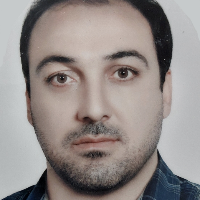The effect of neurofeedback on brain wave modulation and improvement of baseline executive functions of 8 to 12 year old children with specific learning disabilities
Specific learning disabilities are a set of heterogeneous disorders that are severely manifested in the learning and application of listening, speaking, reading, writing, and math skills and can have neurological roots. One of the therapies used in this field is neurofeedback, but a review of the history of neurofeedback and learning disabilities shows that there are many contradictions about the effects of neurofeedback on brain waves in children with special learning disabilities.
The aim of this study was to evaluate the effect of neurofeedback on the modulation of brain waves and basic executive functions in children aged 8 to 12 years with special learning disabilities.
This research was a quasi-experimental study with a pretest-posttest design and a control group. The statistical population of this study included all boys and girls with dyslexia and dysgraphia introduced to centers for learning disabilities in Kermanshah. Sampling Method of this study is convenience sampling. For this purpose 20 students aged 8 to 12 years were selected and randomly divided into two groups of 10 people. The experimental group received neurofeedback intervention for 20 sessions of 40 minutes. In order to record the brain waves, a two-channel neurofeedback device was used and to measure the active memory, change the attention and inhibit the response, Wechsler memory software(Khodadadi, Amani, 2014), Wisconsin(Khodadadi et al, 2014) and Stroop cards(Khodadadi et al, 2014) were used. In order to analyze the data, univariate analysis of covariance and multivariate analysis of variance were used.
the present protocol can suppress the ratio of theta waves to alpha(η2= 0.821) and improve the executive functions of attention change(classes(η2= 0.320), in place(η2= 0.544)), response inhibition(Concordant Time(η2= 0.434), Inconcordant Time(η2= 0.536)) and active memory(Auditory memory Span (η2= 0.515), Visual memory Span(η2= 0.536) in children with dyslexia and dyslexia.
Neurofeedback through the conditioning is likely to lead to the formation of new synaptic connections, ultimately modulating brain waves and improving basic executive functions.
-
The mediating role of emotion regulation in the relationship between attachment styles and social skills and anxiety in children with autism spectrum disorder
Ali Kareem Khlaif Al-Shammar, *, Kamran Yazdanbaksh
Journal of Psychological Sciences, -
The Effect of Self-compassion Training on the Suicidal Thoughts and Experiential Avoidance of Parents with Physical Disabilities Children
, Afshin Tahmasebi *
Empowering Exceptional Children, -
The Effectiveness of Parenting Training Based on Acceptance And Commitment on Parent-Child Interaction, Self-Efficacy And Psychological Flexibility Of Mothers With Children With Attention Deficit/Hyperactivity Disorder
Mahnaz Jalilian *, , Hadi Parhoon
Journal of Family Research, -
The Relationship between Attachment Styles with Successful Aging and Death Anxiety: The Mediating Role of Resilience
Fateme Rezaei, *, Asie Moradi
Journal of Aging Psychology, -
The effect of brain gym training on cognitive abilities of the elderly
Seyed Reza Saadatmehr, Azar Akhavi Pour, Parisa Pourmoradkohan, Fereshteh Bakhshian, *
Journal of Sport Management and Motor Behavior, -
The Effect of Brain Training on Suppression of Theta/Alpha Ratio and Working Memory of 8 to 12 year old Children with Dyslexia and Dysgraphia
, *,
Journal of Cognitive Psycholog,





